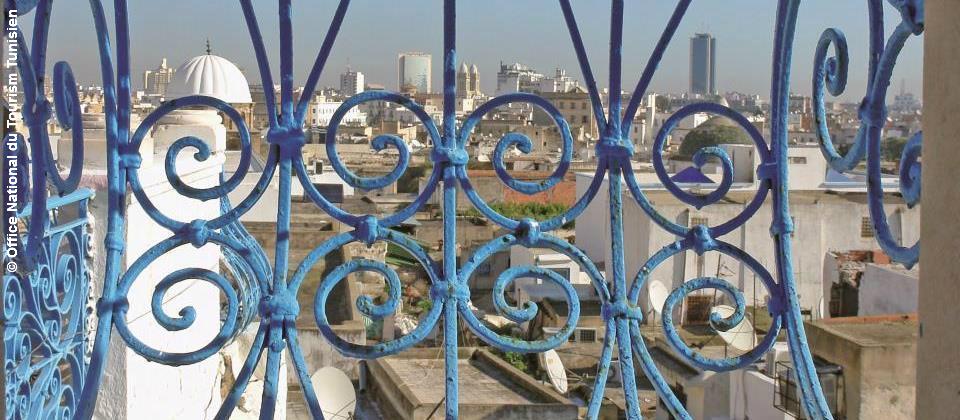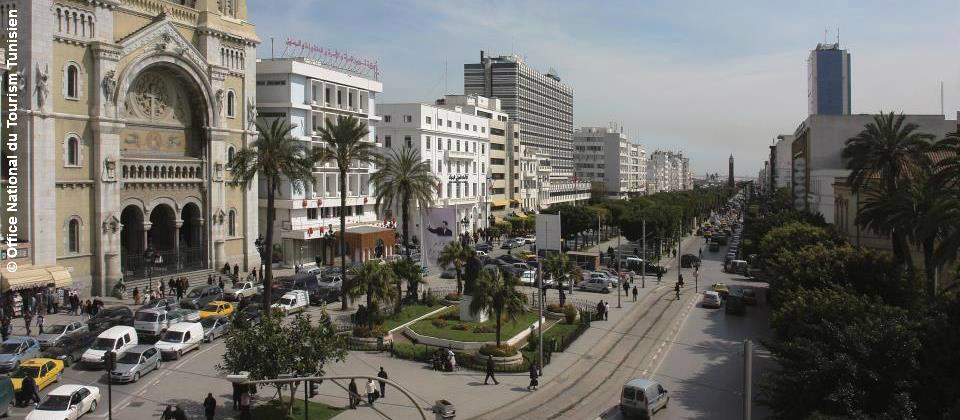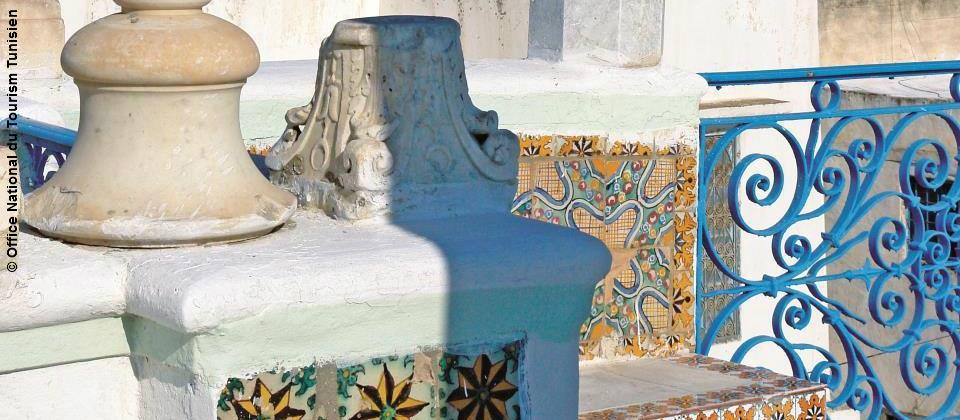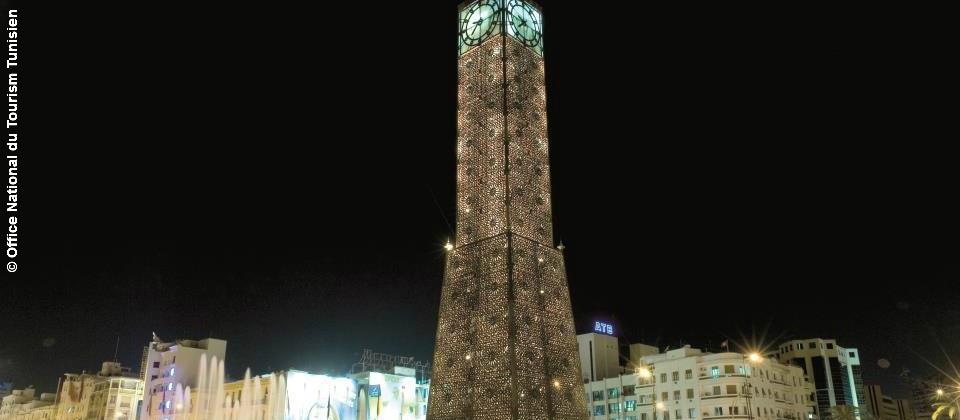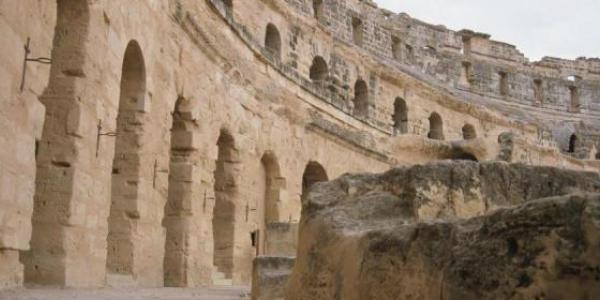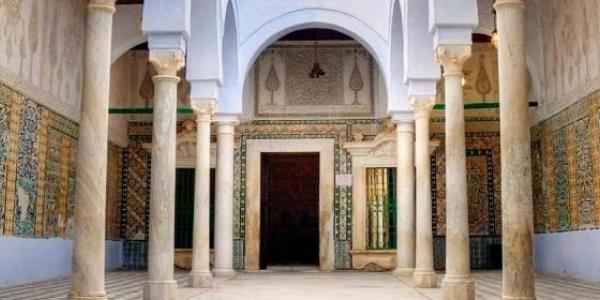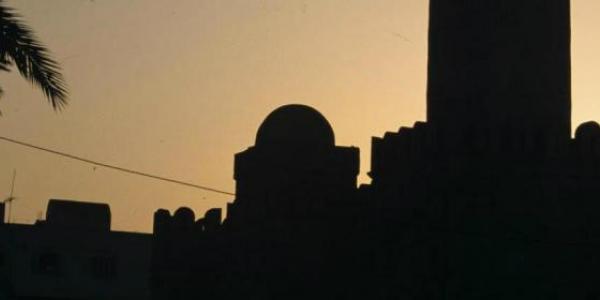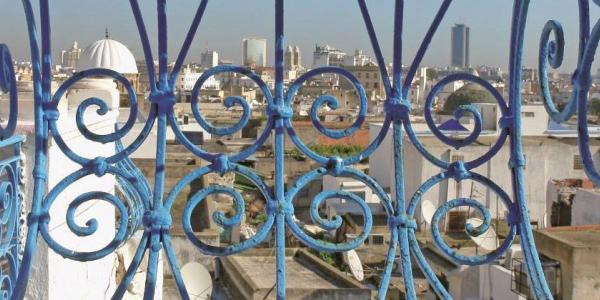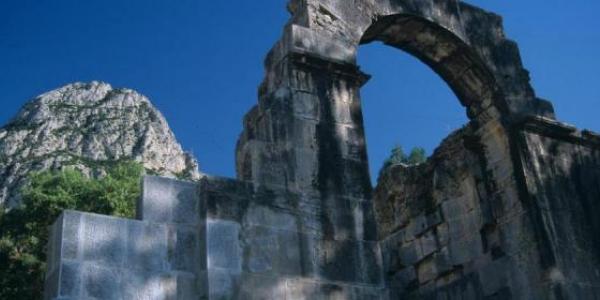It is as early as the 4th century BC that Tunis is mentioned as a Phoenician commercial port bringing together seamen and merchants. It was a crossroads of maritime and land routes which joined Libya and Central Africa through the South. It was destroyed during the Third Punic War for taking up the side of its neighbour Carthage. Rebuilt afterwards by the Romans, it was used as a relay for hosting their soldiers and mercenaries. Christianized, it became the seat of a bishop. It nevertheless remained a small town, in the shadow of the famous and prestigious Carthage.
In 698, Hassan ibn al-Nu‘man, head of the Muslim troops, invaded Carthage and made of the port of Tunis, located at the bottom of a Gulf, his naval base in the western Mediterranean. Power was exercised successively by governors under the auspices of the Umayyad caliphs of Damascus and the Abbasids in Baghdad.
In 800, the emir Ibrahim Ibn Aglab, appointed by the caliph Harun ar-Rashid, established for the first time an autonomous dynastic power in the Abbasid Caliphate, maintaining links with the central government in Baghdad. This independent power finished at the beginning of the 10th century. The city of Tunis continued to live in the shadow of the Capital, Kairouan.
After about two and a half centuries in which the Fatimid and Zirid powers settled in Tunis, and after the city became an independent principality under the Banu Khurasan dynasty for about a century, in 1159 the Almohad dynasty reigning in Morocco began to unify North Africa. The figure of Abu Hafs soon stood out, who broke away to create his own dynasty. He chose Tunis as his capital, distancing himself from the Almohad guardianship. During more than three centuries the Hafsid dynasty ruled the country, a kingdom stretching from Fez on the West to Libya in the East.
Peace and prosperity prevailed. The Christian kingdoms opened their embassies. The population was cosmopolitan. The Andalusi people arriving from Spain brought with them expertise in agriculture and settled in the Medina and in the hinterland. In Tunis, crafts and trades (fez, ceramics, weaving, copper work, etc.) flourished. The prosperity of Ifriqiya aroused the interest and envy of the two great powers of the Mediterranean: the Spaniards and the Ottomans.
In 1534, the Sultan of Constantinople tried to topple the Hafsid dynasty and took the city of Tunis. The Spaniards reacted by sending Charles V with an army of 30,000 men and 400 ships and restored the Hafsid power, not for long, as the city was taken in 1574 by the Ottomans.
After about two and a half centuries in which the Fatimid and Zirid powers settled in Tunis, and after the city became an independent principality under the Banu Khurasan dynasty for about a century, in 1159 the Almohad dynasty reigning in Morocco began to unify North Africa. The figure of Abu Hafs soon stood out, who broke away to create his own dynasty. He chose Tunis as his capital, distancing himself from the Almohad guardianship. During more than three centuries the Hafsid dynasty ruled the country, a kingdom stretching from Fez on the West to Libya in the East.
Under the rule of the Deys, and afterwards the Beys, the capital Tunis found a new lease and its open, cosmopolitan and industrious population increased. Economic activities were diversified. Traditional industries were developed. Foreign trade was successful thanks to the establishment of Jewish and Italian merchants. This era of prosperity saw the construction of lavish palaces and important public buildings.
In the 19th century, an increasing number of Europeans, particularly French, settled in Tunis. France established a protectorate system over the country from 1881 to 1956. In that period, there was a huge European colony (French, Italian, Maltese) in Tunis; half the population had a European origin. The city expanded and new districts and neighbourhoods were created.
The French protectorate was a turning point in the history of Tunis which knew rapid development. The city quickly spread out of its fortifications: it was divided into a traditional Arab-populated old town or Medina, and a “European” city populated by immigrants, with a different structure from that of the traditional medina and endowed with public amenities, such as water supply, natural gas and electricity networks, transport services linking the adjacent suburbs to the city centre, and other public infrastructure. Tunis also saw the introduction of modern industries and new forms of urban life.
After the country’s independence in 1956, Tunis was consolidated in its role as the capital, first with the establishment of a constitution stating that the Chamber of Deputies and the Presidency of the Republic must have their headquarters in Tunis and its suburbs. In a very short time, the city knew a rapid transformation.
Looking towards the future and open to the outside world thanks to modern communications networks, Tunis has become a hub of political affairs, a financial center and an important meeting point, as reflected by its modern conference halls, luxury hotels, banking institutions and leisure facilities. But, apart from that, Tunis boasts a multitude of sites of historical and cultural interest.



